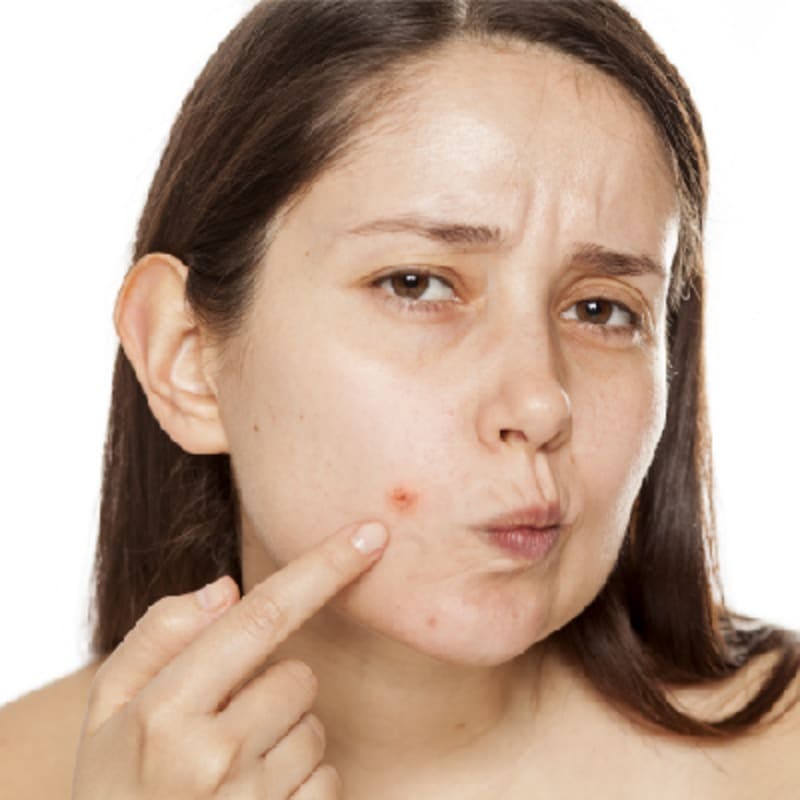Acne is a very common condition that causes spots, oily skin and inflammation
Written by Medical Professional
Can be Treated Online
Appointments Available Today
Written by
Dr Farah Gilani
Doctor
Reviewed by
Dr Faiza Khalid
Doctor
Last Updated:
Next Review: Sep 1, 2025
Guide contents
01Acne signs and symptoms
Articles related to Acne Signs and Symptoms
Acne signs and symptoms
Acne is a very common condition that causes spots, oily skin and inflammation. Otherwise known as acne vulgaris, it most commonly develops on the face, back and chest, as well as the shoulders and arms.
Although most frequent in teenagers, acne can also affect babies, pregnant women and adults. It can range from mild acne (occasional pimples), to moderate (inflammatory papules) or severe (nodules and cysts). If you think you might have acne, we can help with:
What acne do I have? And what are the common symptoms of acne?
This chapter covers
- How do I know if I have acne?
- Do I have mild acne?
- Do I have moderate acne?
- Do I have severe acne?
- When should I see a doctor about acne?
How do I know if I have acne?
The symptoms of acne include:
- Non-inflamed bumps and blackheads
- Inflamed red pimples and pustules
- Tender, pus-filled cysts
The severity of your acne will depend on which of these symptoms you have, and your treatment will change with it. Usually, your doctor will assess the severity of acne by the type of spots you have, and how many there are.
Acne affects more than just the face. Acne breakouts can also occur on the neck, chest, back, shoulders and upper arms, and occasionally the scalp or buttocks.
Do I have mild acne?
Most often treated with over-the-counter topical medicine, mild acne is considered to be primarily whiteheads or blackheads, with the occasional papule or pustule, and no nodules or cysts.
The characteristics of mild acne include:
- Less than 20 comedones
- Less than 15 inflammatory lesions
- A total lesion count of less than 30.
Do I have moderate acne?
If you have widespread whiteheads or blackheads, with multiple papules and/or pustules, you are likely to have moderate acne. Moderate acne usually requires prescription medication and may seem to get worse before it gets better.
The characteristics of moderate acne include:
- 20-100 comedones
- 15-50 inflammatory lesions
- A total lesion count of 30-125.
Do I have severe acne?
With severe acne, you will have many large, painful papules, pustules, nodules or cysts. Your spots may turn a deep red or purple colour and often causes acne scars. Prompt treatment from your GP can minimise this risk, and they may refer you to a dermatologist.
The characteristics of moderate acne include:
- More than 5 pseudocysts
- More than 100 comedones
- More than 50 inflammatory lesions
- A total lesion count of more than 125.
When should I see a doctor about acne?
You should see your GP if:
- Your acne is moderate or severe
- Over-the-counter medicine hasn’t worked
- You feel embarrassed or depressed because of your acne
Not all spots are acne. If you think there is something unusual about your symptoms it is recommended that you consult your GP.
So, how does it work?
Book in seconds
Select a day and time that suits you — then see a doctor on your phone or at a pharmacy.
Speak to a doctor
Have a video consultation and be examined by one of our expert doctors.
Get back to feeling better
Whether it’s a diagnosis, personalised treatment plan or prescription — our doctors can help.
